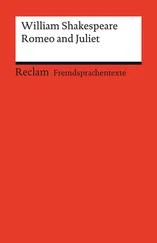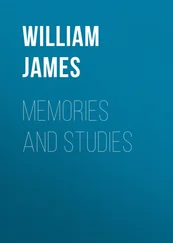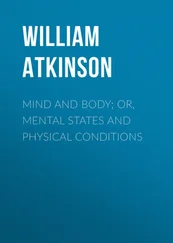William Sleeman - Rambles and Recollections of an Indian Official
Здесь есть возможность читать онлайн «William Sleeman - Rambles and Recollections of an Indian Official» — ознакомительный отрывок электронной книги совершенно бесплатно, а после прочтения отрывка купить полную версию. В некоторых случаях можно слушать аудио, скачать через торрент в формате fb2 и присутствует краткое содержание. Жанр: Путешествия и география, История, foreign_edu, foreign_antique, foreign_prose, на английском языке. Описание произведения, (предисловие) а так же отзывы посетителей доступны на портале библиотеки ЛибКат.
- Название:Rambles and Recollections of an Indian Official
- Автор:
- Жанр:
- Год:неизвестен
- ISBN:нет данных
- Рейтинг книги:4 / 5. Голосов: 1
-
Избранное:Добавить в избранное
- Отзывы:
-
Ваша оценка:
- 80
- 1
- 2
- 3
- 4
- 5
Rambles and Recollections of an Indian Official: краткое содержание, описание и аннотация
Предлагаем к чтению аннотацию, описание, краткое содержание или предисловие (зависит от того, что написал сам автор книги «Rambles and Recollections of an Indian Official»). Если вы не нашли необходимую информацию о книге — напишите в комментариях, мы постараемся отыскать её.
Rambles and Recollections of an Indian Official — читать онлайн ознакомительный отрывок
Ниже представлен текст книги, разбитый по страницам. Система сохранения места последней прочитанной страницы, позволяет с удобством читать онлайн бесплатно книгу «Rambles and Recollections of an Indian Official», без необходимости каждый раз заново искать на чём Вы остановились. Поставьте закладку, и сможете в любой момент перейти на страницу, на которой закончили чтение.
Интервал:
Закладка:
99
All the places named are in the Central Provinces. Ratanpur, in the Bilāspur District, is a place of much antiquarian interest, full of ruins; Mandlā, in the Mandlā District, was the capital of the later Gond chiefs of Garhā Mandlā; and Sambalpur is the capital of the Sambalpur District. If the story is true, the selection of a Brahman for sacrifice is remarkable, though not without precedent. Human sacrifice has prevailed largely in India, and is not yet quite extinct. In 1891 some Jāts in the Muzaffarnagar District of the United Provinces sacrificed a boy in a very painful manner for some unascertained magical purpose. It was supposed that the object was to induce the gods to grant offspring to a childless woman. Other similar cases have occurred in recent years. One occurred close to Calcutta in 1892. In the hill tracts of Orissa bordering on the Central Provinces the rite of human sacrifice was practised by the Khonds on an awful scale, and with horrid cruelty, It was suppressed by the special efforts of Macpherson, Campbell, MacViccar, and other officers, between the years 1837 and 1854. Daring that period the British officers rescued 1,506 victims intended for sacrifice (Narrative of Major-General John Campbell, C.B., of his Operations in the Hill Tracts of Orissa for the Suppression of Human Sacrifices and Female Infanticide . Printed for private circulation. London: Hurst and Blackett, 1861). The rite, when practised by Hindoos, may have been borrowed from some of the aboriginal races. The practice, however, has been so general throughout the world that few peoples can claim the honour of freedom from the stain of adopting it at one time or another, Much curious information on the subject, and many modern instances of human sacrifices in India, are collected in the article 'Sacrifice' in Balfour, Cyclopaedia of India , 3rd edition, 1885. Major S. C. Macpherson, Memorials of Service in India (1865), and Frazer, Golden Bough , 3rd edition, Part V, vol. i (1912), pp. 236 seq., may also be consulted.
100
Bernier vividly describes an 'infernal tragedy' of this kind which he witnessed, in or about the year 1659, during Aurangzēb's reign, in Rājputāna. On that occasion five female slaves burnt themselves with their mistress (Travels , ed. Constable and V. A. Smith (1914), p. 309).
101
Hinduism is a social system, not a creed, A Hindoo may believe, or disbelieve, what speculative doctrine he chooses, but he must not eat, drink, or marry, save in accordance with the custom of his caste. Compare Asoka on toleration; 'The sects of other people all deserve reverence for one reason or another' (Rock Edict xii; V. A. Smith, Asoka , 2nd edition (1909), p. 170).
102
Mīr Salāmat Alī is a stanch Sunnī, the sect of Osmān; and they are always at daggers drawn with the Shīas, or the sect of Alī. He alludes to the Shīas when he says that one of the seventy-two sects is always ready to take in the whole of the other seventy-one. Muhammad, according to the traditions, was one day heard to say, 'The time will come when my followers will he divided into seventy-three sects; all of them will assuredly go to hell save one.' Every one of the seventy-three sects believes itself to be the one happily excepted by their prophet, and predestined to paradise. I am sometimes disposed to think Muhammad was self-deluded, however difficult it might be to account for so much 'method in his madness'. It is difficult to conceive a man placed in such circumstances with more amiable dispositions or with juster views of the rights and duties of men in all their relations with each other, than are exhibited by him on almost all occasions, save where the question of faith in his divine mission was concerned.
A very interesting and useful book might be made out of the history of those men, more or less mad, by whom multitudes of mankind have been led and perhaps governed; and a philosophical analysis of the points on which they were really mad and really sane, would show many of them to have been fit subjects for a madhouse during the whole career of their glory. [W. H. S.]
For an account of Muhammadan sects, see section viii of the Preliminary Dissertation in Sale's Korān, entitled, 'Of the Principal Sects among the Muhammadans; and of those who have pretended to Prophecy among the Arabs, in or since the Time of Muhammad'; and T. P. Hughes, Dictionary of Islam (1885). The chief sects of the Sunnīs, or Traditionists, are four in number. 'The principal sects of the Shīas are five, which are subdivided into an almost innumerable number.' The court of the kings of Oudh was Shīa. In most parts of India the Sunnī faith prevails.
The relation between genius and insanity is well expressed by Dryden ( Absalom and Achitopfel ):
Great wits are sure to madness near allied,
And thin partitions do their bounds divide.
The treatise of Professor Cesare Lombroso, entitled The Man of Genius (London edition, 1891), is devoted to proof and illustration of the proposition that genius is 'a special morbid condition'. He deals briefly with the case of Muhammad at pages 31, 39, and 325, maintaining that the prophet, like Saint Paul, Julius Caesar, and many other men of genius, was subject to epileptic fits. The Professor's book seems to be exactly what Sir W. H. Sleeman desired to see.
103
In the author's time, when municipal conservancy and sanitation were almost unknown in India, the tyranny of the sweepers' guild was chiefly felt as a private inconvenience. It is now one of the principal of the many difficulties, little understood in Europe, which bar the progress of Indian sanitary reform. The sweepers cannot be readily coerced because no Hindoo or Musalmān would do their work to save his life, nor will he pollute himself even by beating the refractory scavenger. A strike of sweepers on the occasion of a great fair, or of a cholera epidemic, is a most dangerous calamity. The vested rights described in the text are so fully recognized in practice that they are frequently the subject of sale or mortgage.
104
The low-caste Hindoos are generally fond of drink, when they can get it, but seldom commit crime under its influence.
105
An elephant driver, by reason of his position on the animal, has opportunities for private conversation with his master.
106
Elephant drivers (mahouts ) are Muhammadans, who should have no caste, but Indian Musalmāns have become Hinduized, and fallen under the dominion of caste.
107
Darbhanga is in Tirhūt, seventy miles NE. of Dinapore. The Kūsī (Kōsī or Koosee) river rises in the mountains of Nepāl, and falls into the Ganges after a course of about 325 miles. Nāthpur, in the Puraniya (Purneah) District, is a mart for the trade with Nepal.
108
The customary attitude of a suppliant.
109
A small river which falls into the Nerbudda on the right-hand side, at Sānkal. Its general course is south-west.
110
November, 1835.
111
Described in the Gazetteer (1870) as 'a large but decaying village in the Jabalpur district, situated at the foot of the Bhānrer hills, twenty-two miles to the north-west of Jabalpur, on the north side of the Hiran, and on the road to Sāgar'.
112
The convenient restriction of the name Vindhya to the hills north, and of Sātpura to the hills south of the Nerbudda is of modern origin (Manual of the Geology of India , 1st ed., Part I, p. iv). The Sātpura range, thus defined, separates the valley of the Nerbudda from the valleys of the Taptī flowing west, and the Mahānadī flowing east. The Vindhyan sandstones certainly are a formation of immense antiquity, perhaps pre-Silurian. They are azoic, or devoid of fossils; and it is consequently impossible to determine exactly their geological age, or 'horizon' (ibid. p. xxiii). The cappings of basalt, in some cases with laterite superimposed, suggest many difficult problems, which will be briefly discussed in the notes to Chapters 14 and 17.
Читать дальшеИнтервал:
Закладка:
Похожие книги на «Rambles and Recollections of an Indian Official»
Представляем Вашему вниманию похожие книги на «Rambles and Recollections of an Indian Official» списком для выбора. Мы отобрали схожую по названию и смыслу литературу в надежде предоставить читателям больше вариантов отыскать новые, интересные, ещё непрочитанные произведения.
Обсуждение, отзывы о книге «Rambles and Recollections of an Indian Official» и просто собственные мнения читателей. Оставьте ваши комментарии, напишите, что Вы думаете о произведении, его смысле или главных героях. Укажите что конкретно понравилось, а что нет, и почему Вы так считаете.












